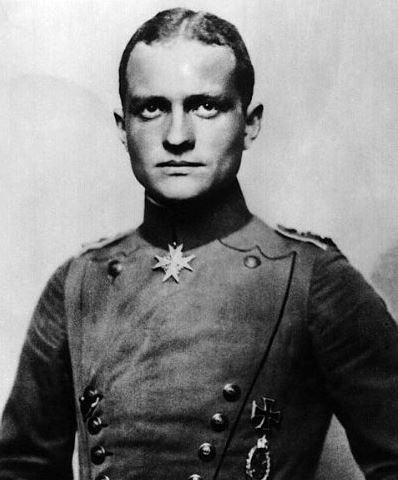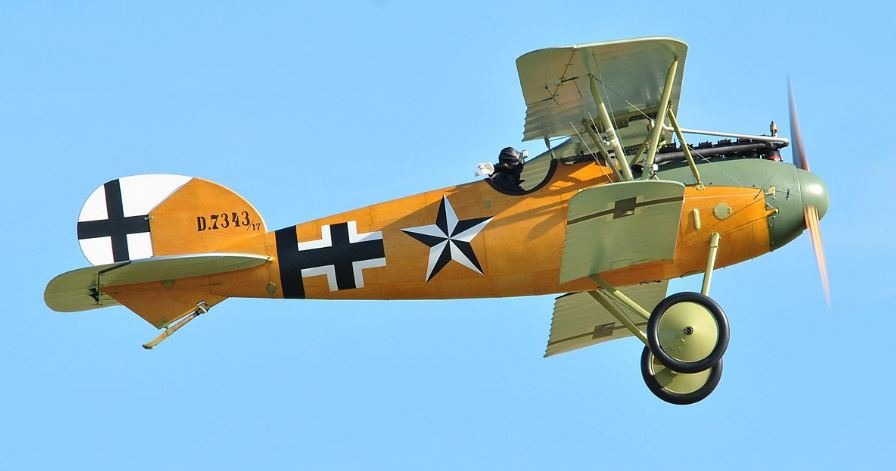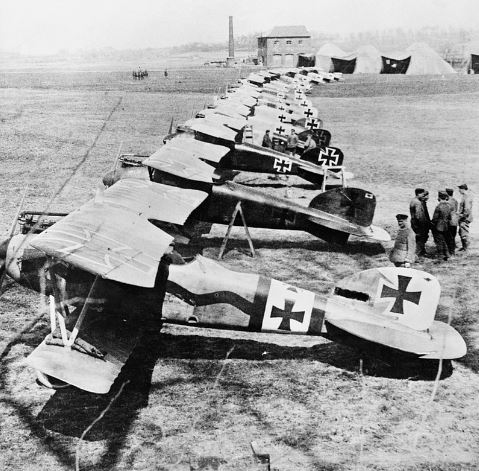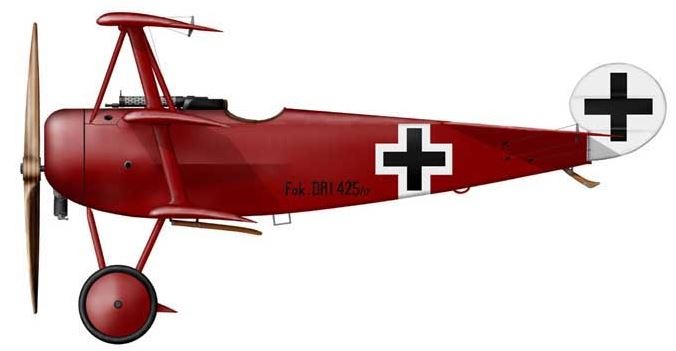He was Manfred von Richthofen. During World War I, he was known as the Red Baron because he piloted a red plane. British called him Red Baron. In France, he was called “Le Petit Rouge,” and in Germany, “Der Rote Kampfflieger” (which means “the Red Battle Flyer”).
Manfred Albrecht “Freiherr” von Richthofen was born in Kleinburg, Germany, near Breslau, Poland, on May 2, 1892. His ancestors were military-minded Prussian nobility. Grandpa was a Cavalry Major like his father. He loved hunting and gymnastics. He medaled in parallel bars at school.
Richthofen was 22 when WWI began in 1914. World War I dragged Europe, Asia, and America into a worldwide war. Nine million soldiers and seven million civilians died between July 1914 and November 1918.
Manfred became a fighter pilot after meeting Oswald Boelcke on a train. 10 October 1915 was his first solo flight. He became a fighter pilot at year’s end. 1916: Manfred fought German planes. He joined Oswald Boelcke’s elite Fighter Squadron. Manfred learned fighter piloting from Boelcke. His first victory came on September 17, 1916. Shooting down an enemy plane is a victory. Many victories over enemy territory weren’t official since they had to be witnessed.
Manfred became one of Germany’s top fighter pilots. He wasn’t a great pilot, but he was a great shooter who took few risks and used excellent tactics. He used the sun to hide while attacking from above. While on the offensive, he deployed additional pilots and planes to fight against rear and side attacks.
In January 1917, Manfred redecorated his plane. His unit eventually painted some planes crimson. He joined Germany’s top fighter pilots, the Flying Circus. They fought on the western front. Manfred became WWI’s top fighter pilot with 80 kills. He was shot down in July 1917 but eventually returned to action.
Manfred was a war hero on both sides and one of Germany’s best. He’s remembered as the Red Baron by the British. The Allies wanted to shoot down the Red Baron to lower German morale.
Manfred von Richthofen, known as the Red Baron, operated a variety of fighter planes.
Albatros “D” Series
The fighter Manfred flew the most was the Albatros “D” series (from DII to DV). This plane was the main German fighter from 1914 until 1917, it was fast, well-armed and quite reliable.
- Engine: Mercedes-Benz, 6 cylinder in-line, 9,400cc, 200HP
- Gross weight: 987Kg.
- Max. speed: 188Km/h (117Miles/h)
- Service ceiling: 18,000 ft
- Armament: Pair of Schwarzlose 8mm machine guns, mounted on top of the engine hood, firing in synchronicity through the propeller. 500 rounds each.
Richthofen faced his deadliest rival, British Ace Major Lance Hawker, on November 23, 1916. Hawker got hit in the back of the skull after a long dogfight. Richthofen returned to his base victorious, but he knew Hawker was at a disadvantage due to his older DH 2, which was inferior to the Albatros DII. Manfred wanted an agile combat plane, even if it meant sacrificing speed. In the months that followed, he experimented with the Halberstadt DII.
Captain Von Richthofen became Commanding Officer of “Jasta 11” on January 16, 1917, when Manfred was promoted to Squadron Leader. His flamboyant nature emerged in his career when he asked for his Albatros to be painted red to signify his promotion.
Manfred’s red Albatros earned him the nicknames “Le Petit Rouge” in France and “Der Rote Pilot” in Germany (The Red Pilot). His rank as Baron made him The Red Baron inevitable.
Manfred’s brother Lothar joined “Jasta 11” on March 6, 1917. By then, Manfred had become a leader, a cool, calculated pilot in contrast to his impulsive and aggressive brother. German high command realized the propaganda value of two Richthofens in the same “Jasta.”
The Flying Circus
The Imperial Air Head formed the “Jagdgeschwader I,” or “JG I,” a fighter wing made up of four “Jastas” (4, 6, 10, and 11), and Manfred was elevated to command the new unit on June 24, 1917. He was only 24 years old at the time.
The “JG I” was extremely mobile; planes could be quickly dismantled and put into trains with spare parts, gasoline, and ammunition before being dispatched to various battlefronts, where soldiers would pitch tents. All of this is similar to the logistics utilized by touring circuses, which is why the unit was called “The Flying Circus” or “Richthofen’s Circus.” The aircraft’s bright colors, of course, served to solidify the name.
Fokker “Dr” Series
In September 1917 all the German fighter units started receiving the new Fokker DR I Triplane, the machine that would forever be attached to the image of the “Red Baron”.
The plane was a nice surprise for all the German pilots, even if it was slower and less powerful than the Albatros, the Fokker was way more maneuverable.
- Engine: Oberursel 9 cylinder radial-rotary, 16,300cc, air-cooled, 110HP. *(see note)
- Gross weight: 586kg.
- Max. speed: 160Km/h (99Miles/h)
- Sevice ceiling: 20,0000ft.
- Armament: 2x Spandau 8mm machine guns, 500 rounds each.
- *Note: The radial-rotary engine (not to be confused with the Wankel rotary engine) is an interesting concept in which the crankshaft is attached to the airframe and the whole engine spins with the propeller.
The new fighter’s agility wowed most pilots, but it had severe problems. It was rushed into production, and quality control on the Fokker assembly line was poor, resulting in a large number of triplanes arriving with structural flaws. Broken wings caused many crashes, with the fuselage folding in half in some cases. Fokker finally rectified the issues in later “Dr” models. Only three of the Manfred’s 80 victories came while flying the Fokker triplane.
The End
From June 1917 to November 1918, Jagdgeschwader I was WWI’s most effective fighter wing, destroying 644 Allied aircraft despite losing 52 pilots. Richthofen’s JG I became legendary.
Manfred and his cousin Wolfran von Richthofen pushed a pair of Canadian pilots to a field at Vaux-sur-Somme, France, in a sector guarded by the Australian Imperial Force on April 21, 1918, while flying above Morland Ridge near the Somme River. The Australian army fired on the Germans because the plane was flying low, and then they saw the red triplane land.
According to the autopsy, Richthofen was killed by a single.303 bullet that wounded his heart and lungs. In his closing moments, he managed a hard landing.
Canadian Captain Arthur “Roy” Brown shot down the Red Baron, but the bullet that wounded him was fired by Australian forces on the ground. 3 Squadron, Australian Flying Corps, was the closest Allied air unit and took over the Baron’s remnants.
Manfred von Richthofen was buried in France on April 21, 1918. Six Australian airmen with the same rank as Richthofen served as pallbearers, and a guard of honor saluted. He was buried in Berlin. In the 1930s, the Nazis built a monument to the infamous German pilot. After the war, the burial was transported to Soviet Berlin, and the memorial was dismantled. In the 1970s, the Baron was buried in Wiesbaden. On his death anniversary, a tribute is held.
Conclusion
If you enjoy the Peanuts cartoons, you probably know Snoopy as the adorable little dog owned by Charlie Brown. He frequently hangs out with his best pal, a small bird named Woodstock, or can be seen snoozing on top of his doghouse. True Snoopy lovers will also recall the Red Baron, his sworn enemy. Snoopy occasionally had daydreams in which his doghouse was transformed into the dependable Sopwith Camel aircraft that he would employ to fight the merciless Red Baron.
But the Red Baron was far more than a mere comic-book foe. Throughout the years, readers’ hearts and imaginations were captured by Snoopy’s dogfights against the elusive and infamous Red Baron, based on a real German flying ace named Manfred von Richthofen. There was a real-life Red Baron, and he was indeed a ruthless, terrifying flying ace who became the arch-nemesis of the Allied forces in World War I.
The awesome and legendary Red Baron. The Ace of Aces. The Red Fighter Pilot. No matter what you call him, he was the greatest pilot the world had ever seen, and his name continues to live on.



